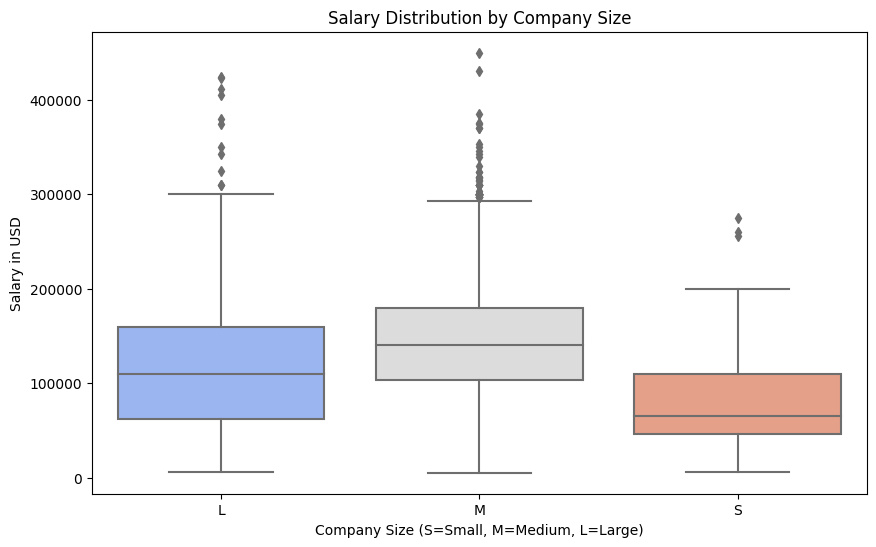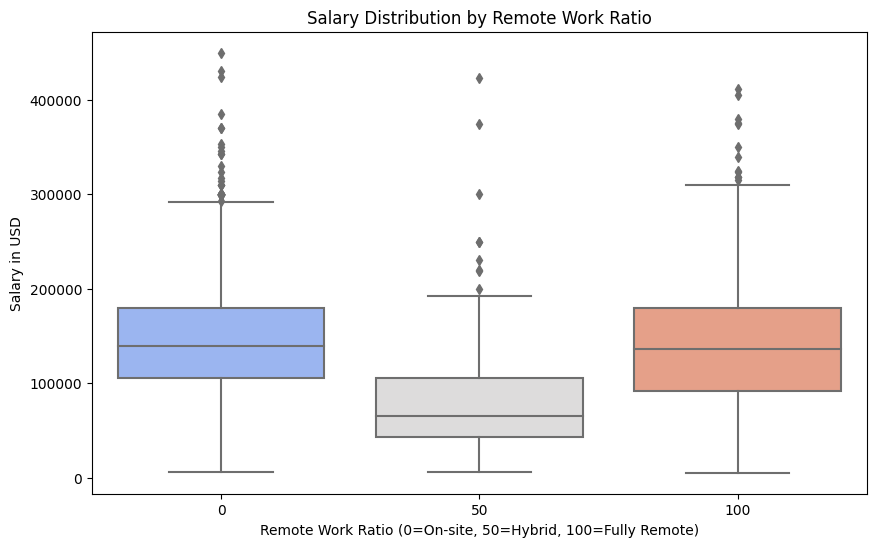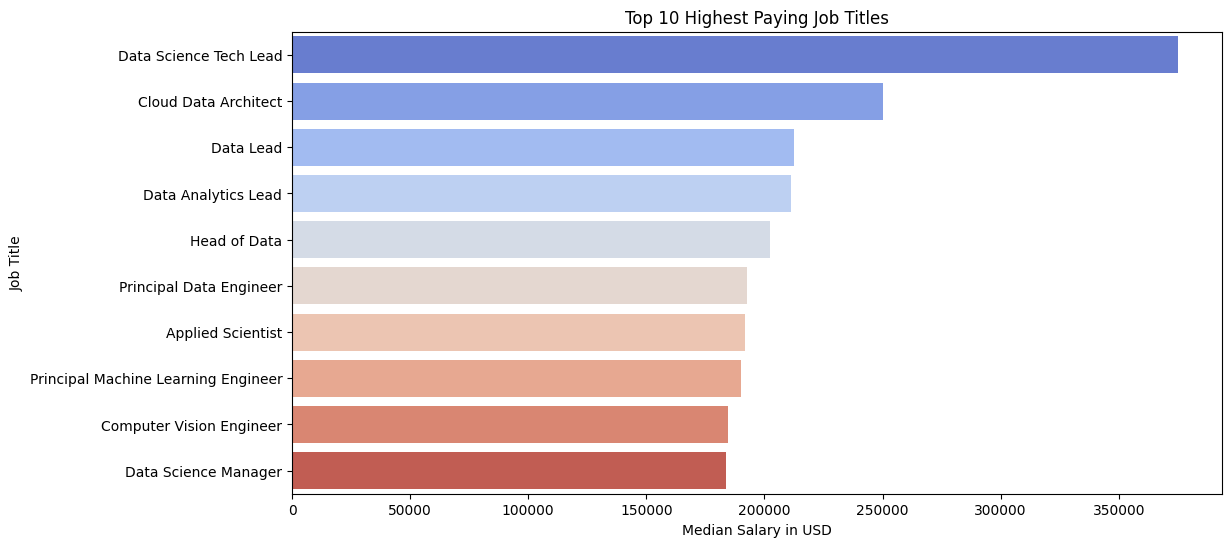Data Science | Analytics
Salary Prediction Analysis
This project analyzes salary trends in the data science industry using historical salary data. It explores key factors influencing compensation, such as experience level, job role, company size, and remote work trends.
Project Links
Tech Stack
Python
Pandas
Scikit-learn
Jupyter
GitHub
Key Features
Comprehensive salary trend analysis
Machine learning model development
Interactive data visualizations
Strategic business insights
Data Insights
Salary by Experience Level

Clear salary progression from entry-level to executive positions, showing career growth potential.
Impact of Company Size

Larger companies tend to offer higher median salaries across all positions.
Remote Work Compensation

Remote positions show competitive compensation packages, reflecting industry adaptation.
Highest Paying Roles

Leadership and specialized technical roles command the highest compensation.
Model Performance
Random Forest Model Metrics
Key Insights
Experience Level Impact
Entry-level to executive position progression shows significant salary increases, with executive roles commanding the highest compensation.
Company Size Correlation
Large companies offer higher median salaries, while smaller firms may provide competitive pay for specialized roles.
Remote Work Trends
Fully remote positions show competitive compensation, sometimes exceeding onsite role salaries.
Business Recommendations
Competitive Salary Benchmarking
Companies should adjust salary structures based on industry trends to remain competitive in talent acquisition.
Workforce Planning Strategy
Focus on internal growth and retention through competitive compensation and clear career progression paths.
Global Market Positioning
Consider regional salary variations when expanding operations or establishing remote work hubs.
Data-Driven Recruitment
Use salary insights to optimize recruitment strategies and reduce turnover through market-aligned compensation.